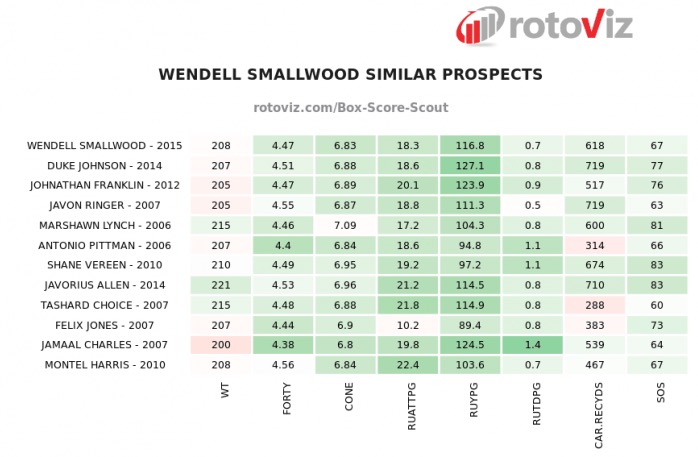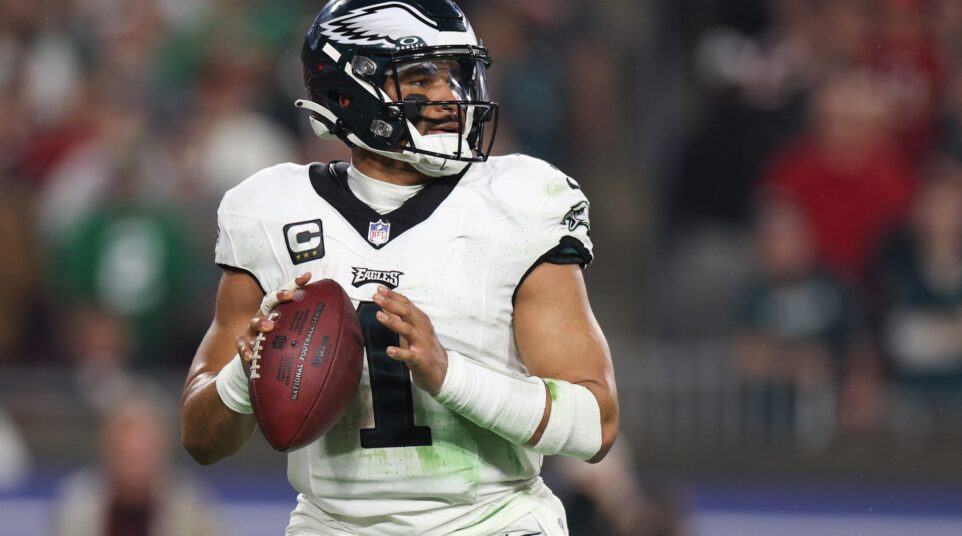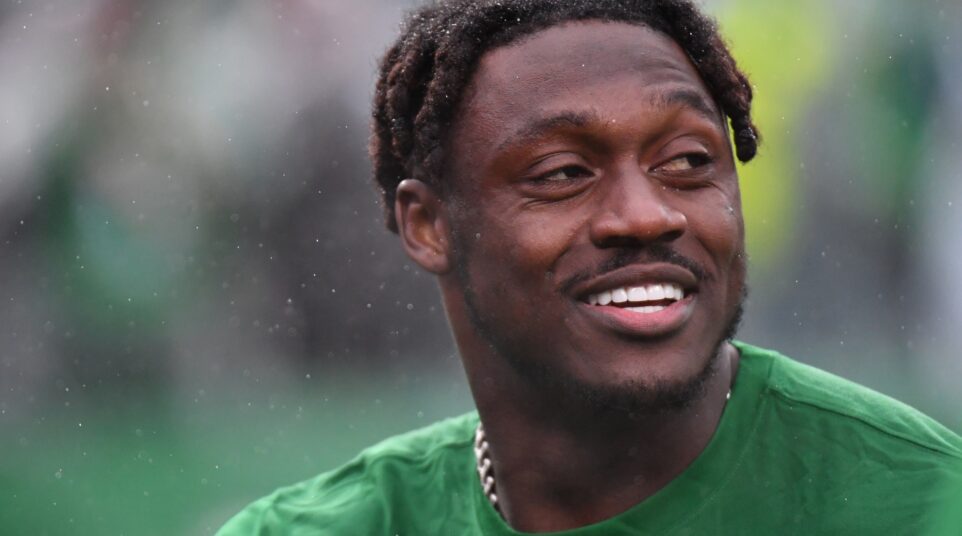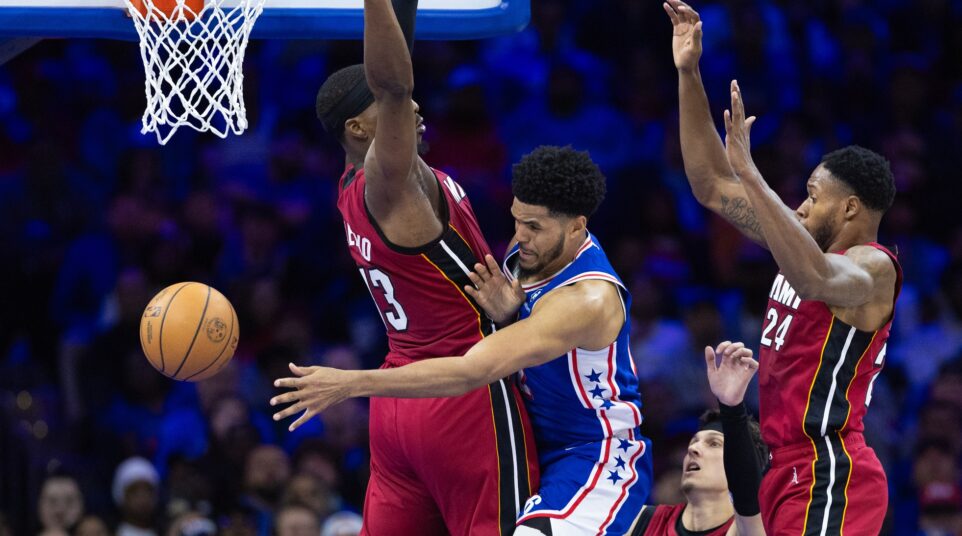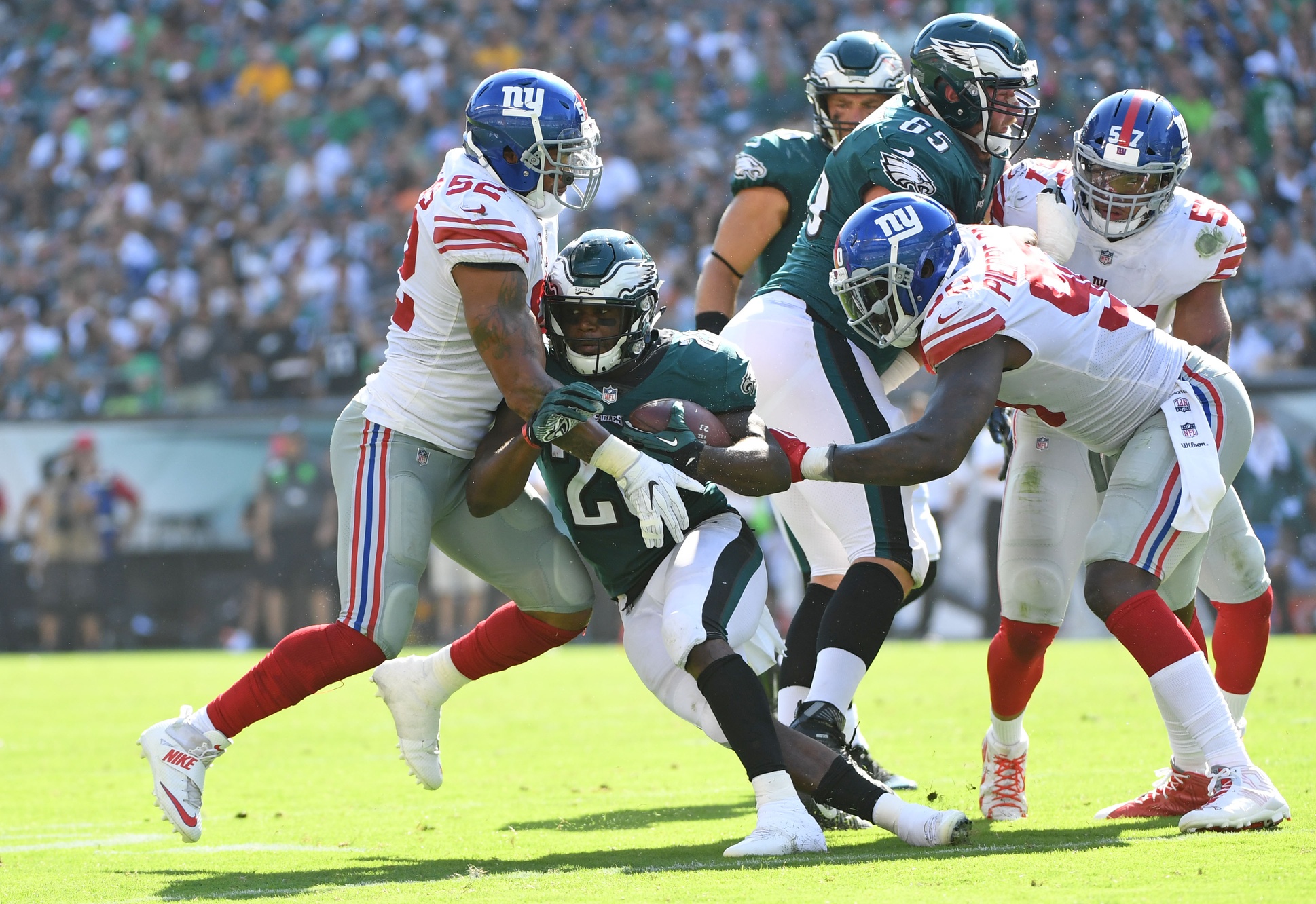
Fantasy Football Week 4: Is Wendell Smallwood a Potential Feature Back for Philly?
If one tailback on the Eagles could consume a bell-cow share of the touches—meaning a player who is capable of handling around 15 carries and the rich allotment of routes and targets the team dedicates to the position—they’d likely become a fantasy star.
If we had a time machine and mind control over Howie Roseman like Smokey had over Debo, this imaginary back would likely be named Dalvin Cook or Joe Mixon (or hey, maybe don’t draft the 17-pound satellite back in the middle of the fourth round; Jamaal Williams or Marlon Mack would be helpful to this roster).
Since we don’t have these options at our disposal, we can instead focus on what remains in the wake of Darren Sproles’ devastating series of injuries on a single play. Some might even spin Sproles as the archetype for the elite change-of-pace back and one arguably worthy of Canton, but that’s another article.
As for his part in Doug Pederson’s West Coast-ish scheme, Sproles has been immensely involved in the Birds’ passing game, as only David Johnson, Le’Veon Bell, Todd Gurley and DeMarco Murray have run more than the 315 routes the diminutive dynamo has since the start of last season.
With the Olde English tilted in Sproles’ honor, it’s time to move on.
We already know what LeGarrette Blount is—he can provide a rousing jolt on early downs to a team in need of his physical running style, yet he also entirely tips the hand to the defense given his utter lack of versatility as a receiver in space. There is also a ceiling to his big-play ability—Blount is the guy who will get you three yards when you need three and three yards when you need seven. Since 2014, Blount has averaged 1.3 rushes of at least 10 yards per game, a middling rate that leaves him 27th among tailbacks who’ve tallied at least 100 carries over this sample. His peers in this data set are the likes of Jeremy Hill, Ronnie Hillman, and Matt Forte.
We’ve already witnessed Blount’s apex as a fantasy option, having led the league in rushing touchdowns as the short-yardage workhorse for a Patriots offense that led the NFL in points per drive once Tom Brady took the keys in Week 5. We know the troubling history for backs coming off of 300-touch workloads. Blount’s best-case outcome in the wake of Sproles’ injury is around 14-16 carries per game and a valuable share of goal-to-go work, but his floor, as Week 2 revealed, is incredibly low, especially in scenarios that see the Eagles trailing (such as in Kansas City), nearly removing him from the game script.
Can either of Wendell Smallwood and Corey Clement consolidate a valuable share of the work Blount simply won’t consume?
Rotoviz produced a deft breakdown on Clement this past winter that offers another former Patriot, Stevan Ridley, as an apt comparison for the Wisconsin product. Clement is an early-down bruiser in the mold of Ridley, netting just 12 receptions to 314 totes as a senior.
As the spider chart from MockDraftable reveals below, we’re not dealing with a special athlete in Clement relative to his positional peers (the site’s database displays a player’s given rating, by percentile, in a variety of athletic combine tests). The first percentile in the vertical and 14th in the 40 are numbers we rarely see for successful NFL backs. BenJarvus Green-Ellis is also a close comparable!
As a lifelong Eagles fan, I can confirm many fans will cry for Clement to get more work simply because he’s the unknown factor. I simply don’t think he’s up to the challenge at this level, at least for anything more than spot duties in short-yardage situations—presenting overlap with Blount’s utility.
Which brings us to Smallwood, a man with a terrible name for a male porn star, but completely acceptable for a professional halfback. Smallwood handled 57 receptions over his final two seasons in college and around 18 carries per game as a workhorse for West Virginia.
Another MockDraftable combine chart confirms Smallwood is, well, small, as he’s in the 31st percentile in weight and 35th in height among running back prospects since 1999. This is why you’ll find Christian McCaffrey and Kenjon Barner as relatively close comparables in regards to athletic profiles. I’m most intrigued by Smallwood’s impressive agility results; finishing in the 82nd percentile in the 3-cone drill and with his straight-line burst, evidenced by a sub-4.5 40-yard performance.
Citing Rotoviz again, fellow football nerd Anthony Amico believes another Mountaineer, Steve Slaton—he of the legendary rookie fantasy season for Houston years ago—is a valid comparison for Smallwood’s pro prospects. This results in Smallwood earning consideration as a “Profile Two” running back—one who can handle a three-down workload, but possibly leave the field in high-leverage short yardage situations (such as goal-to-go work).
The chart above, another Rotoviz production (great site for fantasy and NFL draft analysis, by the way), sifts through players with similar collegiate production profiles. Seeing names like Marshawn Lynch and Jamaal Charles could either incite scoffs or erections depending on your belief in Smallwood. Or, you could reasonably trust that these names offer a wide spectrum of outcomes and that Smallwood is just as likely, if not more so, to have a flameout professional career like Javon Ringer.
We simply don’t know who Smallwood really is yet on this level, while the risk of acquisition in fantasy free agency is minimal. Your fantasy league’s waivers have likely already processed and it’s also likely Smallwood was claimed. If Smallwood is still floating in free agency, I think he’s entirely worth the opportunity cost of a roster spot in most situations. I’m most interested in Smallwood because he offers a wide range of possible outcomes as a professional, while Blount’s story has been written and Clement’s limitations are relatively glaring.
It’s most likely that Pederson plays this straight and lets Blount be Blount and allows Smallwood some less creative approximation of Sproles’ workload, but we bet on outliers and shifts in fantasy as much as we chase trends. With Sproles running so many routes per game, it’s unlikely those schematics are completely abandoned, which means Smallwood could earn up to 4.5 targets per game. If the staff ever does audition Smallwood for something approximating featured duties, he could top the 9.3 touches Sproles has averaged under Pederson.
Like with most late-round running backs added to fantasy teams a month in, it’s unlikely Smallwood is special or a profitable fantasy play, but there are at least some threads in his prospect narrative that imply he could be a productive outlier among this demographic.
Week 4
Whether the focus is the waiver wire in traditional season-long leagues or the daily fantasy market, let’s highlight some of the names and numbers that demand attention for Week 4.
Quarterback
I really like Tyrod Taylor’s ($5,300 on DraftKings) setup in Atlanta this week—he’s a high-floor option thanks to his league-best rushing production from the position (dating back to last season), which suggests he’s fit for cash games. Yet he’s also interesting as a ceiling play for tournaments, especially in a game with a healthy point total (48) against a Falcons defense that has ceded the fourth-most points per drive to opponents since the start of last season. Taylor is only owned in a small percentage of ESPN leagues, thus could also be a quality streamer if you’re among the Andrew Luck loyalists.
It’s difficult to trust Russell Wilson ($7,300) in a cash lineup given the pricing is still so demanding (Aaron Rodgers is just $300 more and he and the Bears have engaged in early-season shootouts before), but I’m all about him for tournament deployment. Since Wilson’s rookie year in 2012, Seattle is 9-1 in home night games and they’ve won those nine games by an average of 18.5 points. Home blowouts can actually prove limiting for a fantasy quarterback, but I’ll ride Narrative Street here and propose that Wilson and the Seahawks are backed up and need a slumpbuster performance against the hapless Colts.
Running Back
Lamar Miller ($4,500) has been pedestrian as the Texans’ feature back over the past 17 games, but at this price point, it’s helpful to consider he’s 14th in the league with 18.3 touches per game. Fantasy Labs’ predictive models admire Miller’s low cost and impressive potential ceiling. Bilal Powell’s ($4,600) cadre of truthers finally get a chance to celebrate, as Matt Forte is banged up. Mark Ingram ($4,600) has looked really good on tape and could be due for a healthy workload on the road in Miami.
Devonta Freeman ($7,300) might be the best running back on Earth. That reads as blasphemy, but he’s the rare back that can carry his offense in both phases (watch the Lions tape, he was a marvel). The Bills have been solid against the run, but on the Atlanta fast-track, Freeman could shine at this discounted price point.
Receiver
Dez Bryant ($6,500) had 16 targets in Week 2 and nine in Week 1, so this last Monday’s two-target showing is the outlier. With Lamarcus Joyner banged up and the Rams somewhat thin in the secondary, Bryant could feast at a discount. Michael Thomas ($7,300) could abuse the Miami secondary this week—they made the Jets look capable last week. When will the market price Rishard Matthews ($4,900) for his rapport with Marcus Mariota?
For those seeking a punt play in order to afford Rodgers at QB or to pay-up for Zeke in the backfield, Jordan Matthews ($3,900) could earn extra attention as game script is likely to trend pass-heavier for the Bills as sizable road dogs.
Tight End
It’s simple this week for me; Eric Ebron ($3,100) or Marty Bennett ($3,700).
D/ST
The Dallas ($2,500) defense is light on talent but big on scheme, so paying basement pricing for a shot at Jared Goff regression is worthy. Otherwise, I actually like shares of the Chargers ($2,500), as they have two edge menaces to fluster Carson Wentz and we know he’s not afraid to put 50/50 balls down the field. That, or just pay up for Jacksonville ($3,600) against the Jets.


